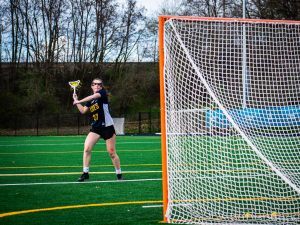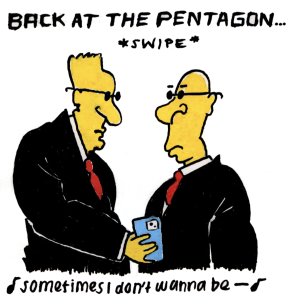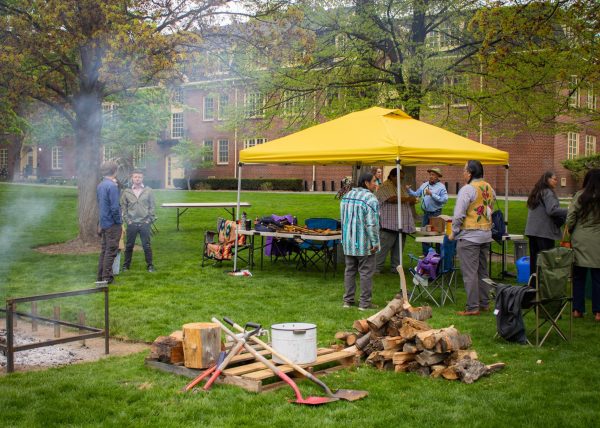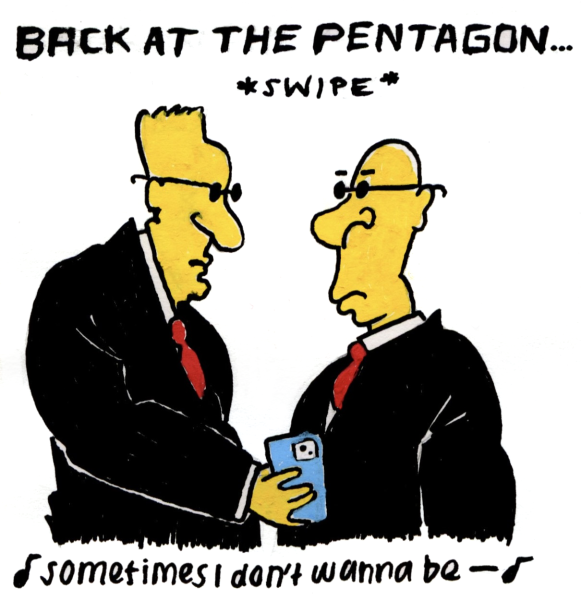When Does a Pledge Delayed Become a Promise Betrayed?
The Black Student Union at Whitman College
January 24, 2017
The documentary “Agents of Change,” shown in Maxey Auditorium last Thursday, taught us that creation of Black Studies programs at San Francisco State College and Cornell University in 1968-69 was anything but peaceful. At San Francisco, a Black Studies Department was established only after a general strike shut down the campus, and Governor Ronald Reagan precipitated “Bloody Tuesday” by ordering the police to re-take it. At Cornell, a program in Africana Studies was founded only after more than one hundred students responded to incidents, including a cross burning outside a black women’s dormitory, by staging a sit-in at the student union facility during Parents Weekend. Firearms were smuggled into the building after members of an all-white fraternity sought to oust the protesters, and, after 36 tense hours, the administration secured a withdrawal in return for a promise to negotiate.
Whitman College was not immune to the forces roiling campuses across the United States in these years. In a recent telephone interview, the first president of the Black Student Union, Philip Boss, explained how he and other students founded the group in 1968. One of its initial actions is recorded in President Sheehan’s report on the 1968-69 academic year: “Several black students called upon the president in the fall to discuss the hiring of black faculty and the enlargement of a curriculum involving black studies.” Reaffirming this request, the following spring, a group calling itself the “Coalition,” composed of black and white students, asked that the president “appear on the steps of Memorial Hall so that they might present their views officially.” Characterizing the Coalition’s requests as “generally rather moderate,” Sheehan expressed relief that to date “Whitman has been spared the necessity of responding to force.”
Responding to these events, toward the close of the academic year, the Whitman faculty created a committee to explore incorporation of “ethnic studies” into the Whitman curriculum. A draft of the committee’s initial report explained that, in departing from the proposal to create a Black Studies program, “we are not denying crucial differences between the experience in America of Afro-Americans and all other racial and cultural minorities. The enslavement of blacks, and the far-reaching consequences of that institution, make black people’s relationship with America fundamentally unique.” But, the document continued, modifications to the curriculum must take into account the fact that “in our region there are two relatively unassimilated ethnic minorities—American Indians and Mexican-Americans—in addition to blacks.” In closing, the draft insisted that “as one of the strongest liberal arts institutions in the Northwest, Whitman has the capability to take unusually bold steps toward remedying present deficiencies in our understanding of ethnic minorities.”
The work of this committee was summarized by Whitman’s dean, Kenyon Knopf, in his 1969-70 report. There, Knopf noted that 29 existing courses “contain information and materials on ethnic groups.” He also explained that several courses, including “Race Relations” and “The Negro in American History,” had been re-structured to “incorporate more contemporary ethnic problems, materials, and analysis.” Lastly, he reported that in 1970-71 a new course would be offered by the English Department on black literary authors and another by the Philosophy Department on “social philosophy,” which, among other topics, would address “urban deterioration and racial inequality.” Three years later, in lieu of a formal department or program, the college catalog included a list of these courses under the heading “Ethnic and Non-Western Studies.” In a sentence that says much about the anticipated beneficiaries of this inventory, the catalog announced that these courses will “help a student body—predominantly white—understand cultures and societies which are not Western in origin, and to appreciate the experiences of non-white, non-Western people in American society.”
We can relate better to minority students because we live the Whitman experience.
— Members of the 1970 Whitman Black Student Union
The claims of the BSU in these early years extended beyond the academic program to encompass issues of student recruitment, academic counseling, and financial aid. In response, again in his 1969-70 annual report, Knopf reported on creation of a “volunteer committee of faculty” to advise non-white students, addition to the Student Affairs staff of a “part-time counselor to ethnic minority students,” and Whitman’s participation in an exchange program that invited black students to attend predominantly white institutions and vice versa. Knopf acknowledged, though, that whereas many white Whitman students wanted to take advantage of this opportunity, “very few black students wish to come to a predominantly white school for even one semester.”
Frustrated by what it perceived to be the slow pace of change, in our interview, Boss explained, the BSU undertook its own initiatives. For example, as the Pioneer reported on February 5, 1970, the BSU received $1,000 from the Associated Students of Whitman College to enable several of its members to travel to high schools in the Northwest and California to recruit students from under-represented groups. Unpersuaded that the admissions office was well-equipped to do so, Boss told the Pio: “We can relate better to minority students because we live the Whitman experience.”
Due to the lack of effort on the past and the pressing forward of the present we will remain within this office until a written agreement on the previous demands is presented to the Black Student Union of Whitman College.
— 1970 Black Student Union Demands of Whitman College
More dramatically, on September 14, 1970, ten members of the BSU presented to President Sheehan “a list of six demands concerning the future conditions of black students and other ethnic groups (Chicanos and Indians) of the Whitman community.” Reiterating its insistence that “a black viewpoint be more prevalent in the fields of study offered by Whitman College,” the petition charged the administration with a failure “to actively participate in recruiting and maintaining Blacks, Chicanos, and Indians on the Whitman College campus.” Accordingly, the BSU demanded that Whitman enroll 100 minority students in 1971-72 and that in the future 15% of all entering classes “be made up of black students and other ethnic groups.” To enable those who otherwise could not attend because of economic constraints, the BSU urged “that ample financial assistance be set aside for all black students and other ethnic groups who are accepted as incoming freshmen.” In closing, the document declared: “Due to the lack of effort on the past and the pressing forward of the present we will remain within this office until a written agreement on the previous demands is presented to the Black Student Union of Whitman College.”
A hand-written note in the Penrose Archives makes apparent that President Sheehan averted the threatened sit-in by securing an agreement with the petitioners: “This is to certify that I will in good faith present with my support the request of the Black Student Union to meet with the Board of Trustees.” Later that month, BSU representatives met with the Board’s executive committee, and, following the Board’s full meeting in November, its president sent a response to Boss.
The Board’s communication opened by affirming its acceptance of “the BSU position that admission of a larger proportion of ethnic minority students, including Indians and Chicanos, as well as blacks, would add desirable educational values at Whitman, not only to those individuals thereby admitted but to the entire campus population.” But it went on to express its concern that doing so might encourage a “trend toward separatism based on concepts that the total program of the college is not pertinent to any particular subculture.” Although Boss insisted in our interview that the BSU repeatedly emphasized that its stated aim was one of “inclusion” and “integration,” the Board nonetheless saw fit to declare that Whitman has “neither the intention nor expectation of being able to fund a separate sub-college for minority students.”
Turning to the financial implications of the BSU’s demands, the Board enumerated only to reject several possible sources of funding for financial aid, including deficit funding, diverting contributions to the endowment, expanding enrollment, and re-allocating aid from partial to deep-need students. Instead, it argued, “to the degree that such admissions would require substantial increases in deep-need financial assistance, success in meeting the challenge of greater financial support through increased endowment must come first.” To make clear the seriousness of its commitment in this regard, the letter explained that “the recently announced $10 million endowment campaign is a direct response by Overseers and the Trustees to the BSU position as well as to the general situation of the college…A sound financial position, while not a goal in itself, is a means to an end without which improvement of any sort cannot be accomplished.” Based on this assurance, Boss told me, the BSU concluded that the College had in effect made a pledge: “When the College had the money, that would enable Whitman to diversify the student body.”
Today, all of us owe a debt of gratitude to these agents of change, members of Whitman’s early Black Student Union, for raising difficult questions that continue to vex the College. To say this is not to deny that Whitman has made significant progress in making the College a more welcome place for its students of color than was the case when Phil Boss was a student. But that should not stop us from asking whether the promise made in 1970 has been adequately fulfilled. That its indefinite postponement was ill-advised was implied when President Sheehan, in a communication to the Board’s Executive Committee, noted that the BSU understood “that financial complications limited or at least slow the pace of change,” but added that this understanding was “somewhat uneasy” and so might “deteriorate” absent demonstrable progress in the near future.
In 1970, the college’s endowment stood at a little over $19 million dollars. In 2015, thanks to the hard work of our governing boards, our generous alumni, and our office of financial development, Whitman’s endowment had grown by nearly half a billion dollars. How to expend the finite resources available to the College is never a matter of simple calculation, and the formulation of annual budgets always involves trade-offs that, in the best of all possible worlds, would prove unnecessary. The difficulty of these questions, though, should never become an excuse for denying or forgetting that, in resolving these thorny issues, the College is making choices that go far toward determining Whitman’s identity as a community.
Three years ago, the Georgetown Public Policy Institute issued a report bearing a stark title: “Separate & Unequal: How Higher Education Reinforces the Intergenerational Reproduction of White Racial Privilege.” That 66% of Whitman students come from the top 20% in terms of median family income while only 2% come from the bottom 20%, as recently reported in The New York Times, is not a racially neutral fact. As we grapple with the findings of our recent campus climate survey, as we move ahead in our strategic planning process, perhaps now is the time to pose once again the question that our Black Student Union put to us nearly a half century ago: What exactly is Whitman’s responsibility in addressing the legacy of what has rightly been called America’s original sin?











